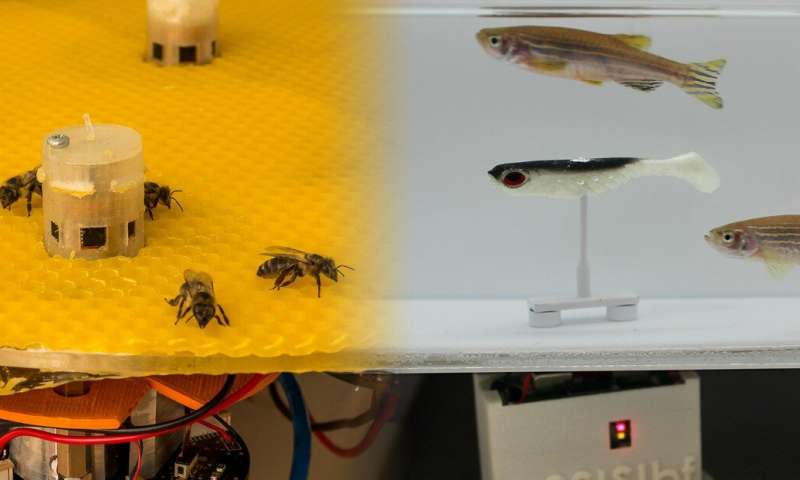Bees and fish ‘talk’ to each other in unprecedented interspecies experiment
If it was possible for two different species to have a conversation with one another, do you think they’d have anything interesting to converse about?
The answer probably depends on the animals having the conversation. Humans and their pets would probably have plenty to gossip about, for instance. Dolphins and whales share enough in common to chit-chat. Perhaps hyenas and cheetahs would engage in a contentious debate about the etiquette of meal-sharing.
But what about really distinct animals, like sea cucumbers and baboons, parrots and cockroaches, or mountain goats and clams? Or what about fish and bees?
One might imagine that these would make for some unlikely pairings for any kind of interspecies talk therapy session. Then again…
A team of researchers working on the ASSISI project (Animal and robot Societies Self-organize and Integrate by Social Interaction) recently decided to test the limits of interspecies communication by constructing a makeshift robot translator that could allow very different creatures to “talk,” reports TechXplore.com.
Their first test subjects? Fish and bees. (Because why not?)
“We created an unprecedented bridge between the two animal communities, enabling them to exchange some of their dynamics,” said Frank Bonnet, one of the team’s researchers.
A ‘mobot’ breaks the ice
Before these animals were willing to shoot the breeze with each other, researchers had to infiltrate their distinct communities, which they did by building a “mobot,” or mobile robot, that acted and communicated in animal languages. In the case of the fish, that meant building a robot that swam like a fish, to mimic the swimming patterns that these fish use to coordinate their schooling behavior. In the case of the bees, that meant creating a vibrating platform of sorts that emits bee-like signals, which the bees learned to group around like they might do when coordinating their swarms.
After sufficiently spying on each species separately, the mobots in the two groups exchanged that information with each other, and then translated the information received into signals appropriate for the corresponding species.
“The robots acted as if they were negotiators and interpreters in an international conference. Through the various information exchanges, the two groups of animals gradually came to a shared decision,” explained Francesco Mondada, another researcher on the project.
Coordination didn’t happen all at once. The two distinct species were pretty confused by the mumbles from the others at first, but were eventually able to figure it out. After just 25 minutes, the bees and the fish were synchronized. The schooling behavior of the fish happened in coordination with the swarming behavior of the bees. It was quite remarkable.
“The species even started adopting some of each other’s characteristics. The bees became a little more restless and less likely to swarm together than usual, and the fish started to group together more than they usually would,” said Bonnet.
What we can learn
It’s an oddball experiment, to be sure. But it’s also kind of heart-warming. These two species might appear to have nothing in common, and yet they still found a way to sync up. They just needed a way to talk.
We can only hope they weren’t laying the groundwork for an all-out invasion by land and by sea. Their conversation did take on the peculiar form of marching orders.
Assuming that we don’t all wake up tomorrow to an all out takeover by our new fish and bee overlords, researchers are optimistic that this experiment will allow them to develop an effective way for machines to capture and translate biological signals, with the ultimate aim of better understanding animal behavior — including human behavior.
For more information about this fascinating endeavor, check out the the video at the top of this page, which was released by the ASSISI project.
SOURCE: Mother Nature Network

